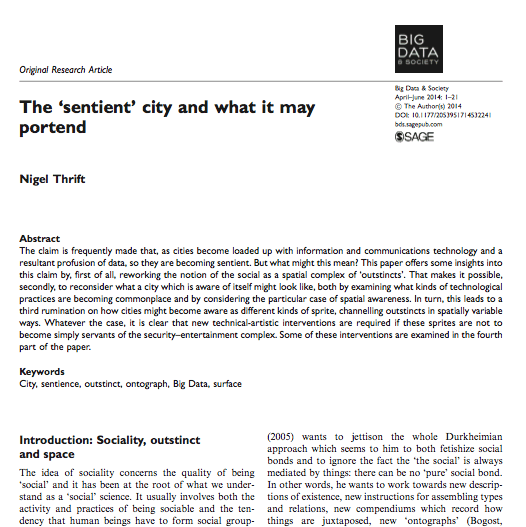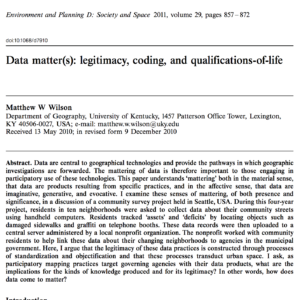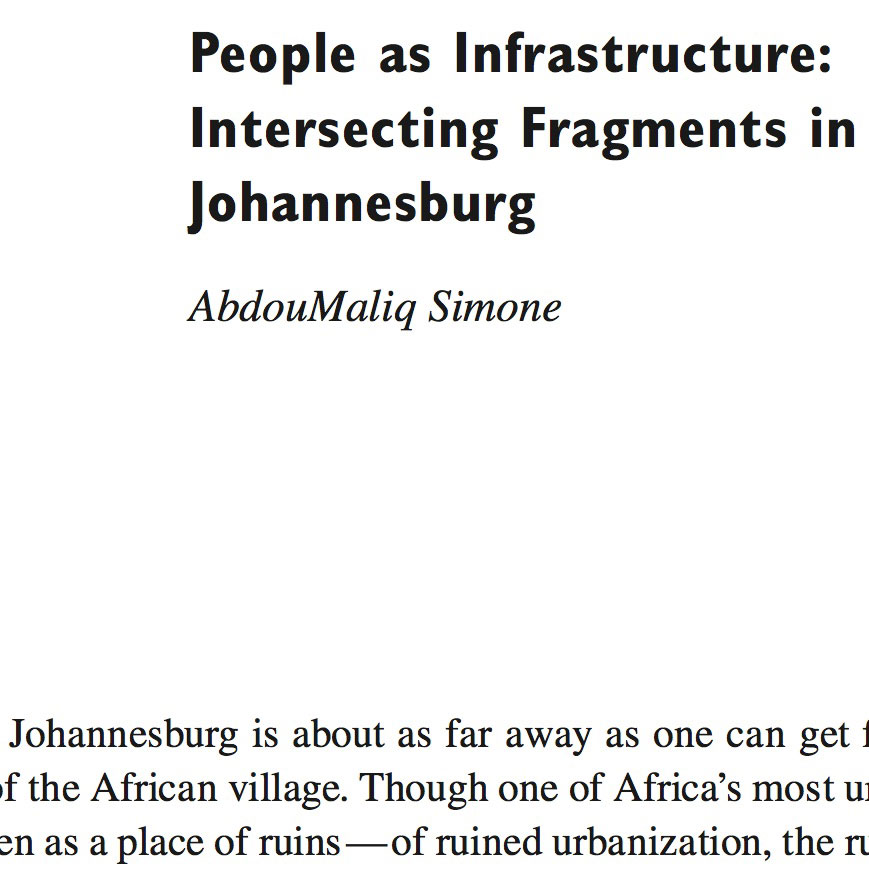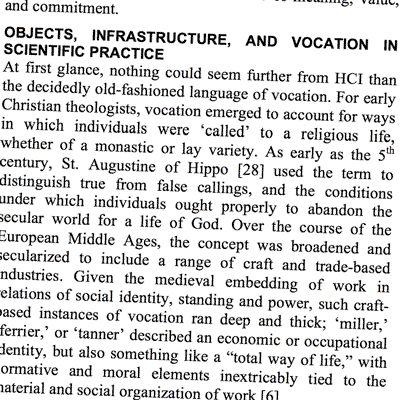Bowker, G.C. (2014). The Theory/Data Thing. International Journal of Communication 8 (2043), 1795–1799. (more…)
Category: Reading
Reading The “sentient” city and what it may portend
A rambling piece in Big Data & Society by Nigel Thrift: The ‘sentient’ city and what it may portend.

Wasn’t expecting the digression into spirits and performance art, but I do like Thrift’s continual efforts to write about expansive human/agent capacities and extending the .
…the claim is being made that, as computational objects have developed, cities are able to take on new forms of vitality (Stern, 2010), forms of vitality which can develop over time. Perhaps one way in which we might consider this ques- tion is precisely through looking at how vitality devel- ops when computational things are explicitly included in the contours of experience. Then it becomes clear that it has only gradually arisen, line by line, algorithm by algorithm, program by program.
Reading Data matter(s)
Wilson, M. W. (2011). Data matter(s): legitimacy, coding, and qualifications-of-life. Environment and Planning D: Society and Space, 29(5), 857–872.

Really helpful paper from Matthew Wilson on the interminglings of data and geography. Although more concentrated on a particular aspect of community life (namely reporting problems or damage to local facilities etc.), the paper has some strong relevances for the Tenison Road project. Especially useful are Wilson’s thoughts on mattering in relation to feminist technoscience and of course
Haraway D J, 1991 Simians, Cyborgs, and Women: The Reinvention of Nature (Routledge, New York)
Haraway D J, 1997 [email protected]_Millennium. FemaleMan©_Meets_OncoMouse™: Feminism and Technoscience (Routledge, New York)
Haraway D J, 1999, “Knowledges and the question of alliances”, in Knowledges and the Question of Alliances: A Conversation with Nancy Hartsock, Donna Haraway, and David Harvey (Kane Hall, University of Washington, Seattle, WA)
On Simone’s ‘people as infrastructure’

A few of us working at the intersection of data, civicmedia and citizenship are taking a look at this article by AbdouMaliq Simone. Some rambling comments follow:
First, just a short point about style: I’m delighted to see Simone’s unapologetic use of rich descriptions of Jo’berg’s streets. They are in striking contrast to what I see to be the standard ethnographic account in HCI papers. What I find tedious is the usual preamble in HCI works—explaining method—and then the use of participants’ quotes as a kind of ‘proof’ of particular points. Also, both point to a curious idea of what it means to demonstrate evidence or proof. Simone bothers with none of this. He gets straight to the stories, to the rich descriptions of inner city Jo’berg and its underbelly. (more…)
Short note on ‘Objects, Infrastructure and Vocation’

Infrastructure and Vocation: Field, Calling and Computation in Ecology
A brilliant CHI paper by Steven Jackson and Sarah Barbrow. How many papers presented at CHI cite St. Augustine of Hippo and, to boot, succeed in drawing out relevant reflections on scientific modelling tools in ecology. Seeing ecology through the lens of both infrastructure and the ‘vocational calling’ provides a productive view onto what ecologists do and how their practices are changing. Jackson and Barbrow illustrate this nicely by writing of the changing notion of ‘the field’ for ecologists. I see a strong parallel here between ecology and biology. Biology is a field very much in transition and the changes have much to do with the material encounters in biological work — with for example the changing nature of biologists’ work at ‘the bench’ and with experimental apparatus. The turn to machines, computation and algorithms is not only reshaping the practices but also refiguring what biologists know and how they see their phenomena (something we also tried to get across in At the interface of biology and computation at CHI). A similar conclusion is being drawn out in this papers as it captures the entangled relations between the tools, practices and ways of knowing in ecology.
Reading Haraway’s ‘Companion Species’

Reading, with delight, Donna Haraway‘s Companion Species. Small and pocketable, it travels.